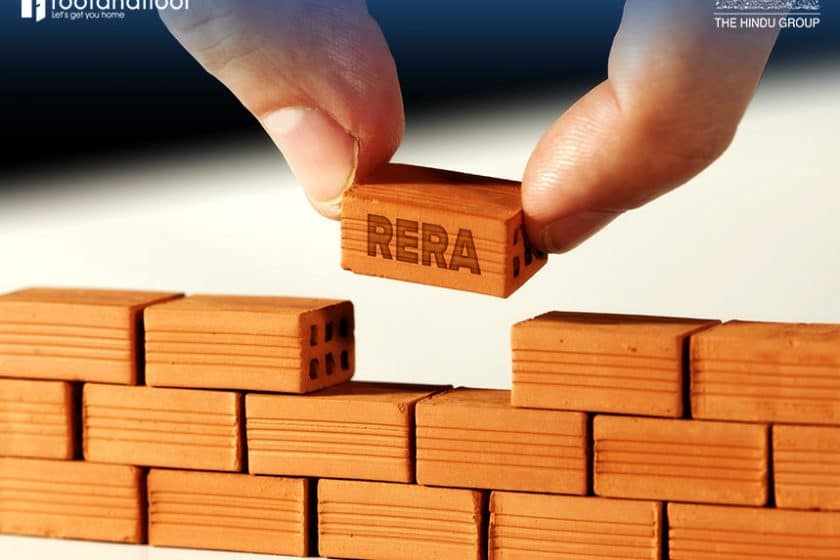It was on this day a year ago that the Real Estate (Regulation and Development) Act, 2016 or RERA came into force in its complete form.
The agenda was to protect the interests of homebuyers and also enhance the credibility of the sector by promoting transparency, accountability, and efficiency in the execution of real estate projects.
“RERA has resulted in increased transparency, leading to higher domestic and foreign investments in the sector. The realty market is experiencing consolidation as unorganised players are struggling to cope with stringent norms under the Act. This is good from a buyer’s perspective as one is assured of a quality product within stipulated timelines,” explained Surendra Hiranandani, CMD, House of Hiranandani.
And with the inception of RERA, the Indian real estate sector has transformed significantly over the last one year.
What’s changed in the past year?
- The supply of new launch projects has declined sharply as developers do not want to face a penalty for project delays
- The sales velocity has improved
- The grievances of homebuyers are being addressed with great importance
- Consumer sentiments have recorded an upward trajectory
“Consumer interest recorded a rise, which further translated into an increase in the number of bookings and queries. The strong latent demand in the last two quarters of FY18 is proof of the same,” said Ashish. R. Puravankara, Managing Director of Puravankara Ltd.
While the Act has, undoubtedly, made great progress, there is a lot more that needs to be done.
Commenting on the first anniversary of RERA, Dr Niranjan Hiranandani, President NAREDCO, said, “Undoubtedly, RERA is a big step forward for Indian real estate, but it will take some more time for all the states to comply with the norms and create the set-up.”
Progress so far…
 At present, RERA is applicable across 28 states (except Jammu and Kashmir) and 7 Union Territories.
At present, RERA is applicable across 28 states (except Jammu and Kashmir) and 7 Union Territories.
RERA made it obligatory for states and union territories to structure their regulator and outline the rules that will administer the operation of the regulator within their jurisdiction.
However, after one year of coming into existence, Maharashtra, Madhya Pradesh, and Punjab are the only three states that have a full-time regulator.
States that have a RERA website
Only 19 states and Union Territories (UTs) have a functional website in place. We found that the information on these portals is woefully outdated. For instance, if you see Andhra Pradesh’s website, it has only two projects and one agent registered.
Out of the states where RERA is notified, Assam, Chhattisgarh, Haryana, and Odisha – and one UT Delhi National Capital Territory (NCT) do not have a website as of now.
In case you want to browse RERA-approved projects in your respective states, here’s a curated list of all the active websites:
Gujarat: http://gujrera.gujarat.gov.in/home#contact
Karnataka: http://rera.karnataka.gov.in/home
Kerala: http://www.rerakerala.org/Content/log.aspx
Madhya Pradesh: http://rera.mp.gov.in/
Maharashtra: https://maharera.mahaonline.gov.in/
Rajasthan: http://www.rera-rajasthan.in/
Tamil Nadu: http://www.tnrera.in/
Uttar Pradesh: www.up-rera.in
Punjab: http://rera-punjab.gov.in/
Himachal Pradesh: http://www.hprera.in/WebSite/Home
Jharkhand: http://rera.jharkhand.gov.in/
Goa: https://rera.goa.gov.in/reraApp/Rules
Bihar: https://nagarseva.bihar.gov.in/rerabihar/
Hurdles still exist
Only 15 states and UTs have made progress in terms of the appellate tribunal.
So, what is the reason for this laxity? Well, Anuj Puri, Chairman of Anarock Property Consultants said, “There are various forces at play – the primary one being the change aversion. RERA was conceived to change the entire status quo of how real estate is designed, developed, and sold in India. It intends to put an end to fly-by-night players – both developers and brokers.”
Individual states also have always had the right come up with their own set of rules, he added.
“Not complying with a Centre-dictated Act is not an option, but in many states, there has been cartelised pressure to amend the various rules of RERA to be more developer-favouring – which defeats the whole purpose of RERA. For these and other reasons, deploying RERA in some states has been far more challenging than in others,” Anuj explained.
Maharashtra leads the way in registered projects
As per the latest registration updates, a total of 27,000 projects have been registered under RERA.
“Maharashtra has the highest share of registered projects under RERA, accounting for 18,000, followed by Uttar Pradesh with 2,350 projects registered, Gujarat and Madhya Pradesh with 1,600 registered projects each, and Karnataka around 1,500 project registrations,” according to Santhosh Kumar, Vice Chairman, ANAROCK Property Consultants.
RERA is slowly changing the Indian real estate landscape
While a lot needs to be done, we must appreciate the positive changes.
“Going forward, RERA will create the much-needed transparency in the real estate sector. A well-governed transparent system will allow the sector to grow and contribute positively towards economic growth. For homebuyers, it will ensure that going forward their capital in real estate is protected and that they receive the product what they have paid for,” concluded Ashutosh Limaye, Head Research & REIS, JLL India.





